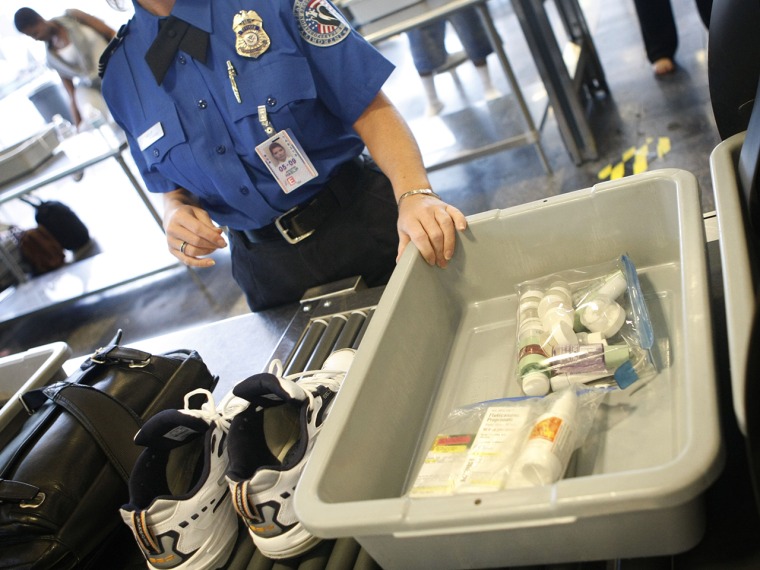In a few short years, air travelers may no longer have to toss their water bottles or pricey face creams when they pass through airport security.
The potential threat from liquids, aerosols and gels led the TSA to limit the amount travelers can bring on planes after a foiled terror plot in 2006, but as you get ready to fly this Thanksgiving week, there’s a new contender in the quest to end the restrictions.
The Los Alamos National Laboratory on Monday announced what it called a breakthrough for screening liquids at airport security, though it could be years before the technology is potentially installed at a checkpoint near you.
Called MagRay, the system uses magnetic resonance imaging (MRI) and X-rays to quickly analyze whether a bottle’s contents are safe or dangerous.
“Things that were challenging before now suddenly become quite clear — even very-difficult-to-detect liquid explosives,” said Michelle Espy, a Los Alamos National Laboratory physicist and MagRay project leader.
“The goal is to get rid of this liquid restriction and still maintain the safety.”
An effective scanner must detect whether a passenger is carrying, for example, a bottle of white wine or nitromethane, which looks very similar but could be used to make an explosive. Screening liquids is challenging because X-ray technology looks at density changes, but since liquids don’t have lots of density changes, it’s difficult to tell them apart, Espy said.
But add MRI into the equation and a new picture emerges.
“It turns out that when you’re able to combine the information that magnetic resonance gives you about the liquid with the information the X-ray gives you about the volume and configuration and density of the liquid, you get new information you didn’t have before,” Espy said.
Each liquid has its own signature, which allows the system to determine whether it’s benign or a threat. All kinds of containers can be screened and the process doesn’t affect the liquid in any way, she added.
The current version of MagRay, which was funded in part by the Department of Homeland Security, looks a bit like a hotel mini-bar with a hole in it.
The ultimate goal is to incorporate the technology with existing X-ray tunnels at airports, so that you can put any amount of liquids in a bin and have them screened along with your carry-ons, Espy said. If everything goes “absolutely perfectly,” it might take about four years for the system to make its way to airports, she estimated.
The government is “extremely encouraged” by the method, Espy said. TSA spokesman Ross Feinstein declined to comment on MagRay, but noted the agency continues to look for ways to resolve the liquids issue.
“Developing technologies, in cooperation with our EU and international partners, that would ultimately allow the relaxation of limitations on liquids, aerosols, and gels in carry-on bags remains a long-term goal,” Feinstein said in a statement.
Another scanner, developed by Ohio company Battelle, will be tested at London’s Heathrow Airport, as well as Aberdeen, Glasgow International and Southampton Airports in the UK. That device uses radio frequency and ultrasonic technology to screen liquids.
Any technology that helps ease the liquid restrictions will make the overall travel experience far more pleasant, said Charlie Leocha, director of the Consumer Travel Alliance, calling the current 3-1-1 policy for carry-ons a “big pain in the neck.”
Travelers have gotten used to being limited to 3.4-ounce containers that fit in a quart-sized plastic bag, but many are still caught off guard, especially during holiday periods, and end up having their water bottle or homemade marmalade confiscated by the TSA, he said.
Any new scanners shouldn’t make the screening process longer, Leocha said.
“It has to be easy and seamless, otherwise they shouldn’t even bother with it,” Leocha said. “If they slow anything down and they back up the lines and make it more difficult to get through security, that will be counterproductive.”
In a 2012 passenger survey conducted by the International Air Transport Association, leisure travelers cited restrictions on liquids as one of the most frustrating elements of the airport security process, more annoying than pat-downs and being asked to remove electronics from bags.
